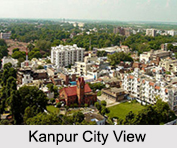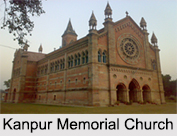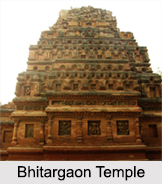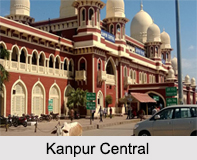 Formerly known as Cawnpore, the city of Kanpur lies in the south-west central Uttar Pradesh in northern India. It lies in the lower Ganges-Yamuna Doab on the Ganges River about 72 km south-west to Lucknow. Recent data suggest that Kanpur has surpassed Lucknow and is now the largest city in the state of Uttar Pradesh.
Formerly known as Cawnpore, the city of Kanpur lies in the south-west central Uttar Pradesh in northern India. It lies in the lower Ganges-Yamuna Doab on the Ganges River about 72 km south-west to Lucknow. Recent data suggest that Kanpur has surpassed Lucknow and is now the largest city in the state of Uttar Pradesh.
Etymology of Kanpur
The city of Kanpur is believed to have a variation of different names like Kanh-pur, Cawnpore or Kaun-pur which literally means "the town of Kanh or Krishna". There are several theories which suggest the origin of the city"s name, one of them being the name is derived from Karnapur, which means the "town of Karna", a tragic hero of the epic Mahabharata. Another theory says that the name came from the nearby town of Makanpur, earlier known as Khairabad, where the Sufi saint of the Madariya Sufi order, Badiuddin Zinda Shah Madar, settled.
History of Kanpur
Nestled on the banks of the Ganges River, the industrial city had journeyed from Kanhiyapur to Kanpur in the last 215 years. Established on 24th March, 1803, the city has been believed to be founded by Raja Hindu Singh Chandel of the erstwhile state of Sankandi. The history of Kanpur dates back to the 13th century, when the area was also ruled by rulers of the Sur dynasty. In May 1765, Shuja-ud-daula, the Nawab Wazir of Awadh, was defeated by the British near Jajmau. It was probably at this time that the strategic importance of the site of Kanpur was realized by the British. The city also took part in the 1857 rebellion under Nana Sahib. Certain events led to the Bibighar massacre, when the sepoy forces killed 120 women and children. Following these events, the Kanpur Massacre and similar other massacres was carried out by the British.
 Demographics of Kanpur
Demographics of Kanpur
As per the reports of Census India 2011, the total population of the city was 2, 765,348 out of which male and female are 1,489,062 and 1,276,286 respectively. The literacy rate was 84.14 percent and a sex ratio of 842. Hinduism is the major religion in Kanpur city with 78.03 percent followers. While the second most popular religion in city of Kanpur is Islam with approximately 19.85 percent following it.
Climate of Kanpur
The city of Kanpur experiences a warm and temperate climate with an average annual temperature of 26 degree Celsius. When compared to the winter season, the summer months receive much more rainfall. The month of May is the warmest month in the city with an average temperature of 34 degree Celsius, while at 15 degree Celsius the month of January is the coldest month in the city. There is a difference of 275 mm of precipitation between the driest and wettest months. The variation in annual temperature is around 18.4 degree Celsius. The annual average rainfall is 820 mm.
Tourism in Kanpur
Apart from being an agricultural and industrial hub, Kanpur has attained a special position among the tourist destinations in Uttar Pradesh. Listed below are few of the popular tourist destinations of the city.
Kanpur Memorial Church: Constructed in the year 1875 to commemorate the courage and valour of the British troops who surrendered their lives in the tumultuous Sepoy Mutiny of 1857 in Kanpur, the Kanpur Memorial Church or the All Soul"s Cathedral is an impressive architectural edifice. The building was built in the Lombardy gothic architecture style by Walter Granville, an erstwhile architect of East Bengal Railway. Built in red bricks with multi-coloured hues, the interior of the church showcases the heartbreaking memorial tables, epitaphs and monuments that pay tribute to those soldiers who sacrificed their lives for their country.
 Bhitargaon Temple: Built during the 6th century Gupta Empire, the Bhitargaon Temple is the oldest remaining terracotta Hindu shrine with a roof and a high Shikhara and a terraced brick building fronted with a terracotta panel. The temple is built on a square plan with double-recessed corners and faces east. There are also tall pyramidal spire over the Garbhagriha. The walls are decorated with terracotta panels depicting aquatic monsters, Lord Shiva and Lord Vishnu etc. When Lord Cunningham first visited the site, the remains of the porch and of the ardhamandapa were still visible but later collapsed.
Bhitargaon Temple: Built during the 6th century Gupta Empire, the Bhitargaon Temple is the oldest remaining terracotta Hindu shrine with a roof and a high Shikhara and a terraced brick building fronted with a terracotta panel. The temple is built on a square plan with double-recessed corners and faces east. There are also tall pyramidal spire over the Garbhagriha. The walls are decorated with terracotta panels depicting aquatic monsters, Lord Shiva and Lord Vishnu etc. When Lord Cunningham first visited the site, the remains of the porch and of the ardhamandapa were still visible but later collapsed.
Nana Rao Park: Formerly known as Memorial Well Garden, the Nana Rao Park is the biggest park in Kanpur and is situated in the heart of the city on the Mall Road. After Independence, it has been renamed after Nana Rao Peshwa, the hero of the first War of independence in 1857. It is very beautifully laid out and has a plant nursery.
Jagannath Mandir Benhta: Dedicated to Lord Jagannath, this temple is located in the village of Benhta. The typical feature of the Jagannath Mandir is that there are rain drops dripping from its roof a week before it actually rains. Over the years surveys and analysis has been conducted to decipher this phenomenon but to no avail. The actual date of the construction of the temple is still shrouded in mystery and it is said that the last restoration of the temple was done in the 11th century.
Allen Forest Zoo: Known to be one of the oldest Zoological Park of India, the Allen Forest Zoo is a popular tourist attraction. Established in 1978, this is a man-made forest with an undulating terrain that resembles a high-forest. The animals inhabited in the Zoological Park have been put in open and moated enclosures, which give the animals" ample space for movement. Besides the animals, the provision of holding picnics has enhanced the charm of the place.
 JK Temple: This beautifully constructed temple is a unique blend of ancient and modern architecture. The even-level roofs of the mandaps have been provided with adequate ventilation for sufficient light and air. Among the 5 shrines in the temple, the central one is dedicated to Shri Radha-Krishna</b> and the others have idols of Shri Lakshmi-Narayana, Shri Ardhanaarishwar, Shri Narmadeshwar and Lord Hanuman.
JK Temple: This beautifully constructed temple is a unique blend of ancient and modern architecture. The even-level roofs of the mandaps have been provided with adequate ventilation for sufficient light and air. Among the 5 shrines in the temple, the central one is dedicated to Shri Radha-Krishna</b> and the others have idols of Shri Lakshmi-Narayana, Shri Ardhanaarishwar, Shri Narmadeshwar and Lord Hanuman.
Green Park: A famous cricket stadium in Kanpur, the Green Park is the pitch where international cricket matches take place. It is a 32,000 capacity floodlit multi-purpose stadium under the control of the Sports Department of Uttar Pradesh. It is the only international cricket stadium in Uttar Pradesh that has regularly hosted international cricket matches in both Test and One Day format. The stadium hosted the 500th test played by the Indian team.
Other places of interest include are the Jain Glass Temple, the Phool Bagh, Moti Jheel, Kamla Retreat, etc. The city also celebrates festivals like the Gagan Mela, which is celebrated after Holi for a period 7 days in memory of the revolutionaries who were imprisoned during the Revolt of 1857. Another one is the Swing Festival, which is a traditional festival celebrated in the Dwarka Dhish Temple. This spring festival is visited by a number of tourists and devotees.
Transportation in Kanpur
The city of Kanpur has 3 airports, which makes it the fifth highest in India. The nearest international airport to the city is the Chaudhary Charan Singh International Airport at Lucknow. The Kanpur rail routes are connected to all major cities in the state and the country. The Kanpur Central is a major railhead and is among the busiest railway stations in India. Several important National Highways like NH 2. NH 25, NH 86 and NH 91 pass through Kanpur. The city is well connected to all states in the country.



















